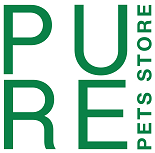If you’re a dog owner, then you know the importance of providing your furry companion with the right nutrition. With countless options available on the market, choosing the right dog food can be a daunting task. However, fear not! In this article, we’ll guide you through the process of selecting the perfect food for your four-legged friend. From understanding your dog’s dietary needs to deciphering confusing labels, we’ve got you covered. So, sit back, relax, and prepare to make an informed decision that will keep your pup happy and healthy.
Table of Contents
ToggleUnderstanding Your Dog’s Nutritional Needs
Determining your dog’s life stage
Understanding your dog’s life stage is crucial in determining their nutritional needs. Puppies have different dietary requirements compared to adult dogs, and senior dogs have their own unique needs as well. By understanding your dog’s life stage, you can choose a dog food that provides the appropriate balance of nutrients for their age.
Considering your dog’s breed and size
Different dog breeds have different nutritional requirements. Large breeds, for example, may need a diet that supports healthy bone development and joint health, while small breeds may require higher energy density. Additionally, certain breeds are prone to specific health conditions, such as allergies or digestive issues, which should be taken into consideration when selecting their food.
Identifying any dietary restrictions or allergies
Just like humans, dogs can have dietary restrictions and allergies. It’s important to identify any specific ingredients that your dog may be allergic to or intolerant of, such as grains or certain proteins. This information will help you choose a dog food that avoids these ingredients and ensures your dog’s overall health and well-being.
Different Types of Dog Food
Dry dog food
Dry dog food, also known as kibble, is the most commonly available type of dog food. It is convenient, has a long shelf life, and can help maintain good dental health by promoting chewing. Dry dog food often contains a balanced mix of proteins, carbohydrates, and essential nutrients.
Canned dog food
Canned dog food, also known as wet dog food, is a popular choice for dogs that have difficulty chewing or require additional moisture in their diet. Canned dog food is generally higher in protein and moisture content compared to dry dog food, making it a good option for dogs with specific dietary needs.
Raw dog food
Raw dog food, also known as a raw diet or BARF diet (biologically appropriate raw food), consists of uncooked meats, bones, organs, and vegetables. Some proponents of raw feeding believe that it mimics a dog’s natural diet in the wild. However, it is important to note that raw feeding requires careful preparation and consideration to ensure proper nutrition and food safety.
Semi-moist dog food
Semi-moist dog food is a less common type of dog food that falls in between dry and canned food. It has a soft and chewy texture and is often highly palatable. However, it is important to note that semi-moist dog food can be high in sugar and artificial additives, so it should be chosen carefully.
Reading and Understanding Dog Food Labels
Analyzing the ingredient list
The ingredient list on a dog food label provides valuable information about the composition of the food. Look for high-quality proteins, such as real meat, as the first ingredient. Avoid foods that list fillers, by-products, or artificial additives high on the list. Understanding and interpreting the ingredient list will help you make a more informed decision about the quality of the dog food you choose.
Checking for AAFCO (Association of American Feed Control Officials) statement
The AAFCO statement on a dog food label indicates that the food has been formulated to meet the nutritional standards set by the AAFCO. Look for phrases like “complete and balanced” or “meets AAFCO nutrient profiles” to ensure that the food provides the necessary nutrients for your dog’s specific life stage.
Decoding the guaranteed analysis
The guaranteed analysis section on a dog food label provides information about the minimum levels of crude protein and fat, as well as the maximum levels of crude fiber and moisture. This information can help you assess the overall nutritional profile of the food and compare it to your dog’s specific needs.
Identifying any artificial additives or fillers
It’s important to be aware of any artificial additives, preservatives, or fillers in your dog’s food. These ingredients may be used to enhance taste, texture, or shelf life, but they may not provide any nutritional value to your dog. Opt for dog foods that prioritize natural ingredients and avoid unnecessary additives.
Considerations for Special Dietary Needs
Feeding a senior dog
Senior dogs have specific nutritional needs to support their aging bodies. Look for dog foods that are formulated for senior dogs and contain ingredients that support joint health, cognitive function, and a healthy weight. Additionally, consider feeding smaller, more frequent meals to senior dogs who may have a decreased appetite or difficulty chewing.
Choosing food for a puppy
Puppies require higher levels of protein, fat, and certain nutrients for proper growth and development. Look for dog foods that are specifically formulated for puppies and meet the AAFCO standards for growth. Feeding puppy-specific food during this crucial stage will help ensure that your puppy receives the necessary nutrients for healthy development.
Addressing weight management
If your dog is overweight or obese, it’s important to select a dog food that supports weight management. Look for dog foods labeled as “light” or “weight management” that are lower in calories and fat while still providing essential nutrients. Additionally, consider portion control and incorporating regular exercise into your dog’s routine to help them achieve a healthy weight.
Options for dogs with sensitive stomachs
Some dogs have sensitive stomachs and may experience digestive upset or food intolerances. Look for dog foods that are specifically formulated for dogs with sensitive stomachs or have limited ingredient formulas that avoid common allergens. These foods are typically easier to digest and can help alleviate gastrointestinal issues.
Evaluating the Brand’s Reputation
Researching the company’s background
Before selecting a dog food brand, it’s important to research the company’s background and reputation. Look for transparency, ethical sourcing of ingredients, and a commitment to quality and safety. A reputable company will provide information about their manufacturing processes, ingredient sourcing, and quality control measures.
Looking for recalls or safety concerns
Check for any past recalls or safety concerns associated with the brand or specific products. This information can be found on the manufacturer’s website, the FDA’s recall database, or through independent organizations that track pet food safety. Avoid brands with a history of recalls or safety issues to ensure the health and well-being of your dog.
Reading reviews and user experiences
Reading reviews and user experiences can give you valuable insights into the quality and effectiveness of a dog food brand. Consider both positive and negative reviews, as they can provide a balanced perspective. Look for reviews from dog owners with similar breeds, life stages, or dietary needs to your own dog to get a better idea of how the food might work for them.
Consulting with Your Veterinarian
Discussing your dog’s specific needs
Consulting with your veterinarian is essential in determining the best diet for your dog. They can provide personalized recommendations based on your dog’s specific needs, taking into consideration their age, breed, health conditions, and any dietary restrictions or allergies. Your veterinarian has the expertise to guide you towards the most suitable dog food for your furry friend.
Getting recommendations based on your dog’s health conditions
If your dog has specific health conditions, such as allergies, kidney disease, or arthritis, your veterinarian can provide tailored recommendations. They may recommend a prescription diet or specific ingredients to support your dog’s overall health and manage their condition. Your veterinarian’s guidance is invaluable in ensuring your dog receives the appropriate nutrition for their individual health needs.
Ensuring a balanced and complete diet
Your veterinarian can also help you ensure that your dog’s diet is balanced and complete. They can evaluate the nutritional adequacy of the dog food you choose and provide guidance on any necessary supplements or adjustments. Regular check-ups with your veterinarian will help monitor your dog’s overall health and make any necessary changes to their diet as they age or their needs change.
Determining the Cost and Value
Comparing prices per serving
When evaluating dog food options, it’s important to consider the cost per serving. While some dog foods may have a higher upfront cost, they may provide better overall value if they contain higher-quality ingredients and meet your dog’s nutritional needs more effectively. Consider the long-term benefits and potential savings in veterinary bills when assessing the cost and value of different dog food options.
Considering the quality of ingredients
The quality of ingredients plays a significant role in the cost and value of dog food. Higher-quality ingredients may come at a higher price, but they often provide better nutrition and contribute to overall better health and well-being for your dog. Look for dog foods that prioritize real meat, whole grains, and natural ingredients over fillers, by-products, and artificial additives.
Evaluating the overall nutritional value
The overall nutritional value of dog food is an important factor to consider when determining its cost and value. Look for dog foods that provide a balanced and complete profile of essential nutrients, vitamins, and minerals. Additionally, consider any additional benefits the food may offer, such as joint support, digestive health, or skin and coat health. A dog food that meets your dog’s nutritional needs effectively will provide better value in the long run.
Choosing a Dog Food Delivery Service
Exploring the benefits of a delivery service
A dog food delivery service can offer convenience and peace of mind. By subscribing to a delivery service, you can ensure that your dog always has an adequate supply of food without the need to constantly restock. Additionally, delivery services often offer a wider selection of brands and products, making it easier to find the right dog food for your furry friend.
Finding a reliable and reputable service
When choosing a dog food delivery service, it’s important to find a reliable and reputable provider. Look for companies with a track record of on-time deliveries, excellent customer service, and a commitment to quality. Read reviews and compare different options to find a service that aligns with your needs and provides the level of service you expect.
Comparing subscription options
Different dog food delivery services offer various subscription options to suit different budgets and preferences. Some services offer flexible subscriptions that allow you to adjust the frequency or quantity of deliveries, while others may offer discounts or rewards for loyal customers. Consider your dog’s dietary needs, your budget, and the level of convenience you desire when comparing subscription options.
Transitioning to a New Dog Food
Gradual transition process
When transitioning your dog to a new dog food, it’s important to do so gradually to avoid digestive upset. Start by mixing a small amount of the new food with their current food and gradually increase the proportion of the new food over a period of several days to a week. This gradual transition allows your dog’s digestive system to adapt to the new food more easily.
Monitoring your dog’s response
During the transition period, closely monitor your dog’s response to the new food. Look for any signs of digestive upset, such as loose stools or vomiting. Additionally, observe their overall energy levels, coat condition, and appetite. If your dog shows any adverse reactions or if you have concerns, consult your veterinarian for guidance.
Making adjustments if necessary
If your dog has difficulty adjusting to the new food or experiences digestive issues, it may be necessary to make adjustments. This can include slowing down the transition process, adding probiotics or digestive enzymes to support digestion, or even trying a different brand or formulation. Every dog is unique, so it’s important to be flexible and make adjustments as needed to ensure your dog’s well-being.
Common Mistakes to Avoid
Choosing based on price alone
One common mistake dog owners make is choosing dog food based solely on price. While budget is an important factor to consider, it should not be the sole determining factor when it comes to your dog’s nutrition. Opting for the cheapest dog food may result in lower-quality ingredients and inadequate nutrition, potentially leading to health issues in the long run. Instead, focus on finding the best value for your money by prioritizing quality and nutrition.
Not considering your dog’s specific needs
Every dog is unique, with individual dietary needs. It’s important to consider your dog’s specific needs when choosing their food. Factors such as age, breed, size, activity level, and any health conditions or allergies should all be taken into account. By selecting a dog food that addresses your dog’s particular requirements, you can ensure their overall health and well-being.
Overlooking potential allergens
Some dogs are prone to food allergies or sensitivities. It’s crucial to carefully read ingredient labels and avoid potential allergens for your dog. Common allergens in dog food include grains, certain proteins (such as chicken or beef), and artificial additives or preservatives. If your dog experiences symptoms like itching, gastrointestinal upset, or skin issues, consider trying an elimination diet or consulting with a veterinarian to identify and avoid potential allergens.
Skipping regular food evaluations
Dog food needs can change over time. It’s important to regularly evaluate your dog’s food and make adjustments if necessary. Factors such as age, weight, activity level, and health conditions can all affect your dog’s nutritional requirements. Keep an eye on your dog’s overall health and well-being, and consult with your veterinarian to ensure that their current food is still meeting their needs. Regular food evaluations will help keep your dog in optimal health throughout their life.
In conclusion, understanding your dog’s nutritional needs is essential for their overall health and well-being. By considering factors such as their life stage, breed and size, dietary restrictions or allergies, you can choose a dog food that provides the necessary nutrients and supports their specific needs. Reading and understanding dog food labels, evaluating the brand’s reputation, consulting with your veterinarian, and considering the cost and value are all important steps in selecting the right dog food for your furry friend. Additionally, transitioning to a new dog food should be done gradually, with careful monitoring and adjustments if needed. By avoiding common mistakes and regularly evaluating your dog’s food, you can ensure that they receive a balanced and nutritious diet that promotes their optimal health throughout their life.








